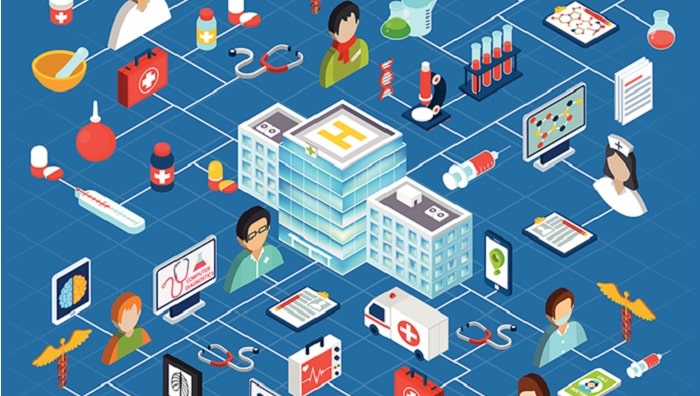The use of information exchanged through systems integration, linked devices, and other means to anticipate and forecast customer demand, connect siloed enterprises, and increase supply chain efficiency is known as digitalization.
Minimizing medical expenses has lately been the norm for most hospitals and physicians, particularly since payers have begun to tie claims and payment amounts to quality and cost performance. While some firms are focused on the billing and services aspect of the revenue cycle to reduce costs, others are starting to think about healthcare supply chain management. The supply chain is made up of the resources required to offer goods and services to customers. Managing the supply chain in health care may be a highly difficult and fragmented operation.

Healthcare supply chain management is a comprehensive process that includes everything from resource acquisition and supply management to the delivery of products and services to providers and patients. Many independent interests, including manufacturers, insurance companies, hospitals, providers, group buying groups, and certain regulatory authorities, have information regarding physical objects and medical products and services that may be used to carry out the process successfully. You must go through all of the parties involved.

Here’s how digitalization can play a game-changing role.
Digitizing the supply chain allows healthcare providers to provide the right items to the right patients at the right time at a low cost. Building a digital supply chain will also allow healthcare firms to take advantage of technology advancements aimed at improving data flow and analytics, provider-patient communication, asset monitoring, and regulatory compliance.
Some of the present somewhat turbulent supply chain conditions are price correctness, a higher level of openness and communication brought about by the dissemination of practical data through digitalization, and accountability for more revenue cycles. Put the extremely important discipline of.
Hospitals are dealing with more cash flow concerns, amortization, write-downs, and payment plans than ever before. They also struggle to maintain financial prudence in an ever-changing consumer-led payment landscape. Adopting a Digital Supply Network (DSN) can help with this effort in a variety of ways.
To allow doctors access to the equipment they require without hiding it, revenue cycle managers and nurses stay near the computer screen to handle transactions, figures, and difficulties. You must also grant permission to the doctor. To devote important time to patient care. Implementing data analysis and automation techniques may greatly simplify supply chain management.

Automation enables doctors to spend more time providing great treatment and less time stirring their favourite products to ensure they are ready when needed. This allows for many value propositions, but in fact, you may collect data at every stage in your supply chain and share it with significant components
The industry needs to transform an enormous amount of big data into usable insights, but suppliers are limited in their ability to do so due to inconsistent and unstandardized data. Providers must create accurate inventory estimations and work tirelessly to build the fundamental competencies required to avoid expenditure increases that occur with little or no rationale.
Without digitalization, the volume of data handled would be massive and unmanageable, limiting stakeholders at all levels from making the most of available information and resources.
The integration of digitization to supply chain networks can result in a healthcare system that delivers the right items to the right place at the right time.
Also Checkout: How To Remove The Crown Icon On Discord















